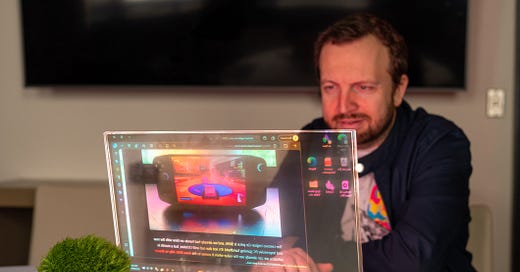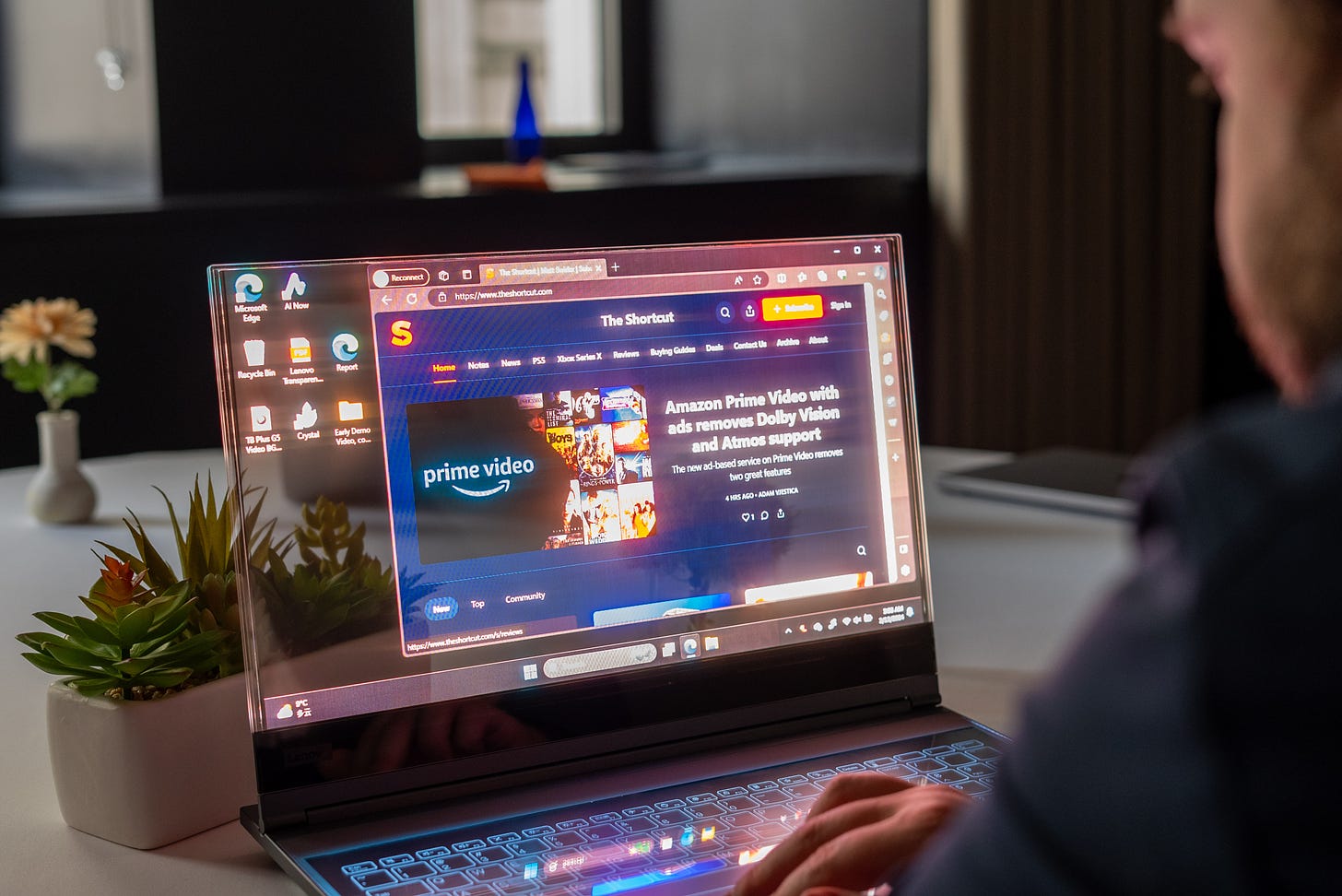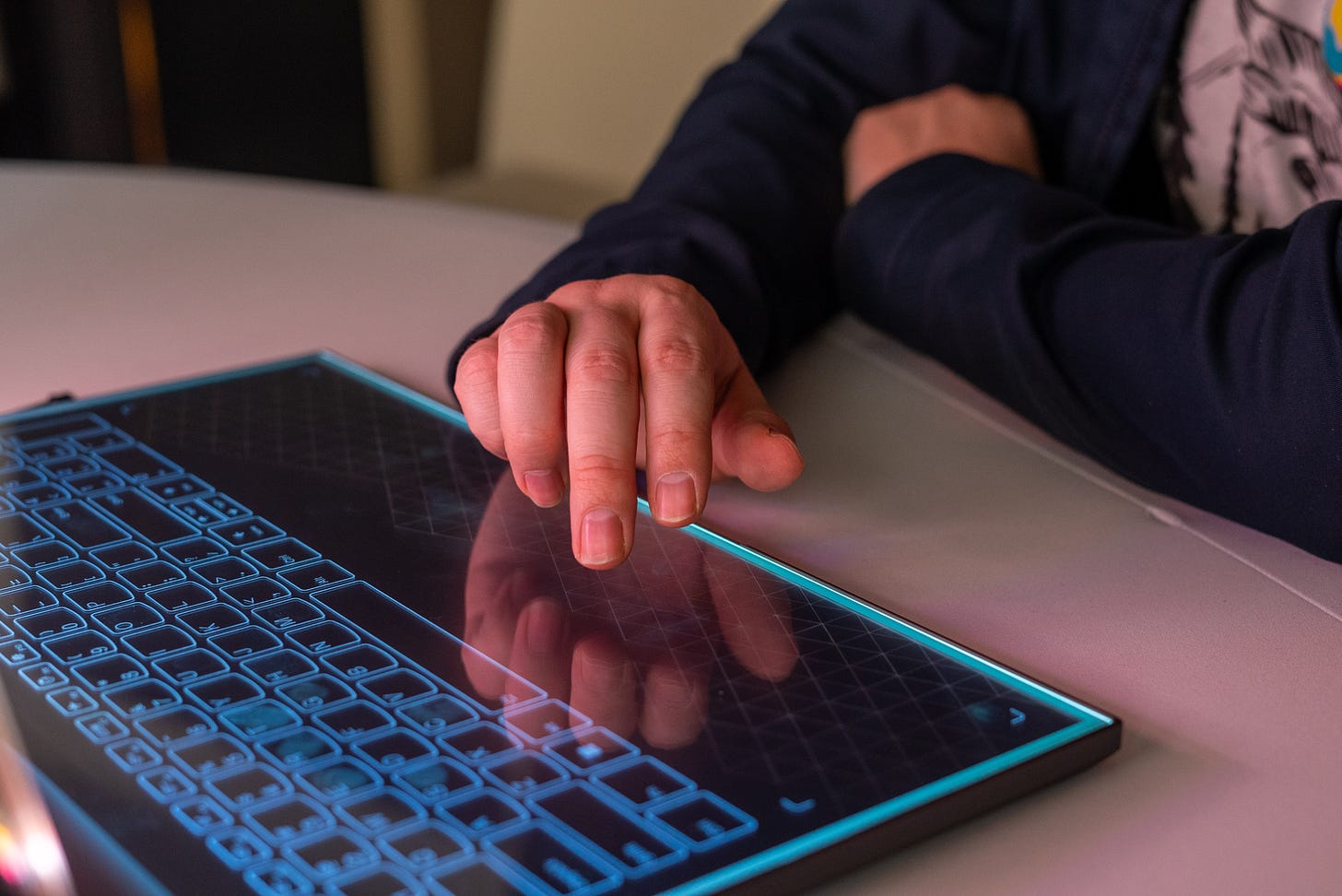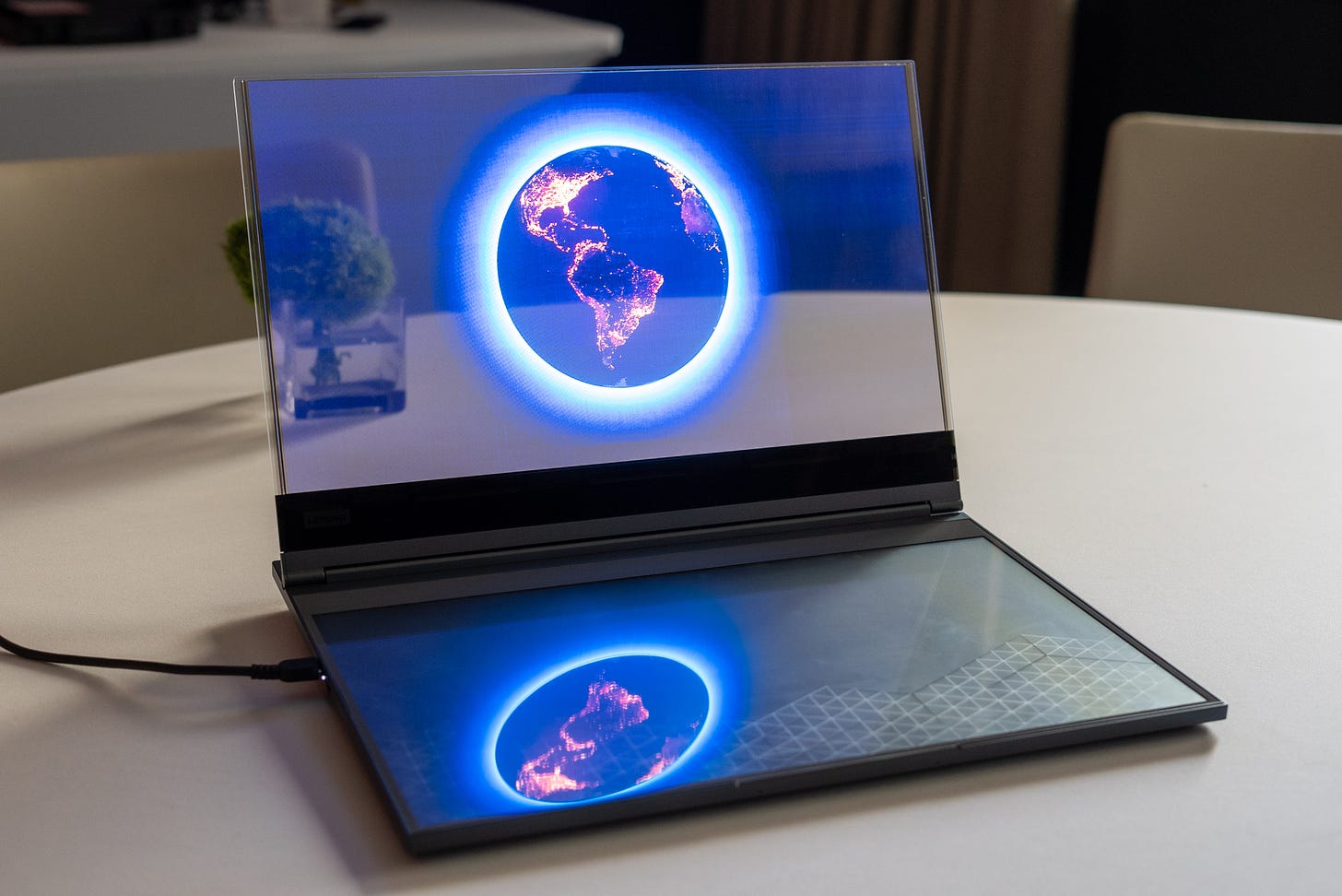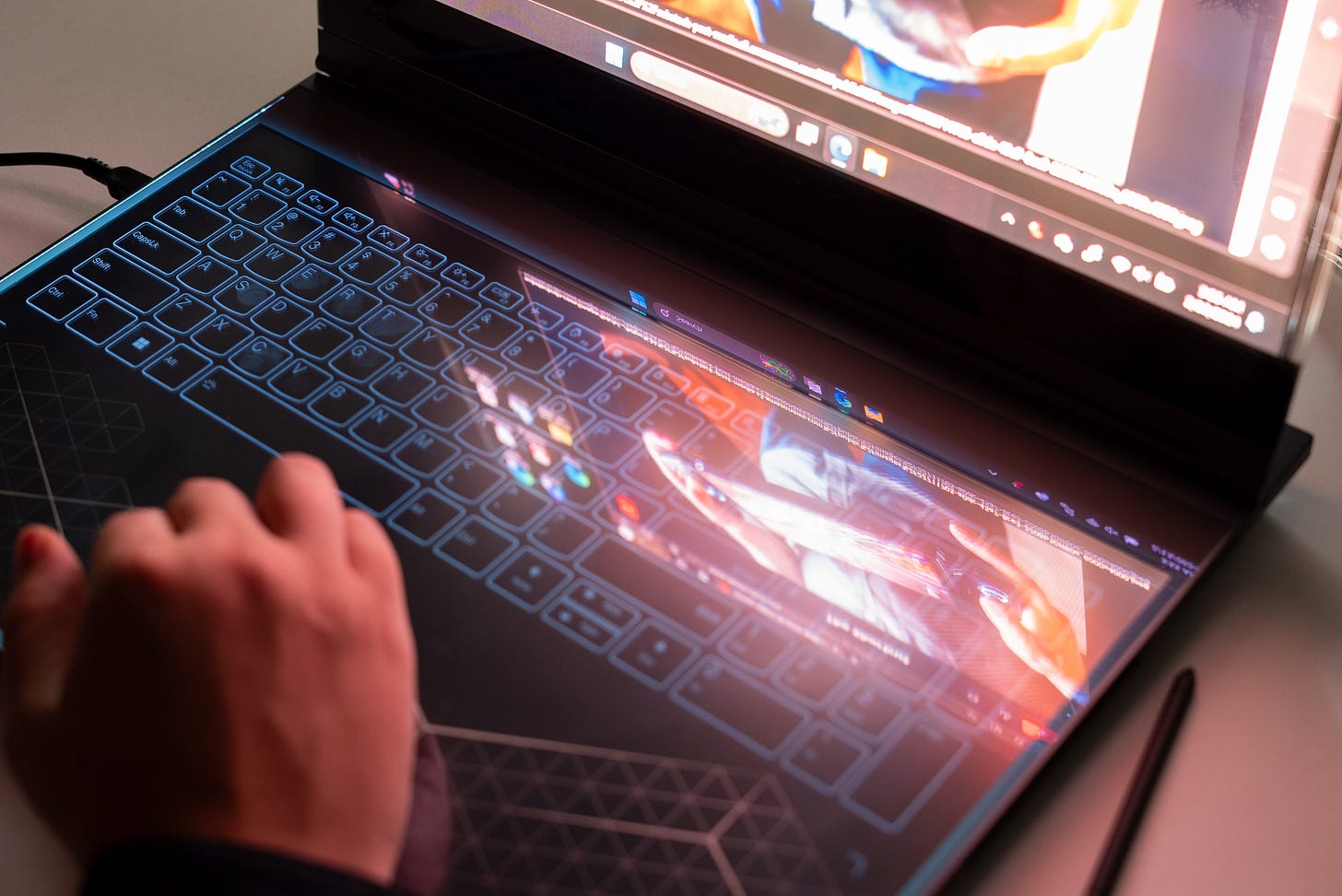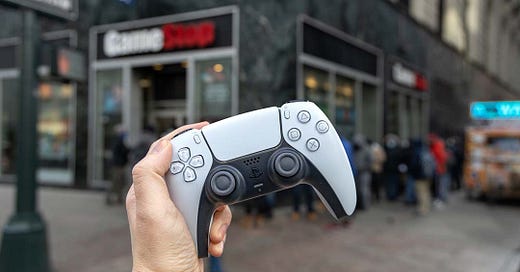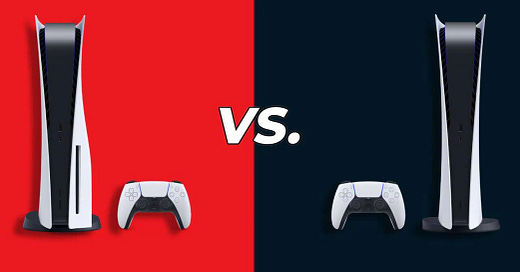
Lenovo ThinkBook Transparent is a see-through laptop straight out of a sci-fi future
Lenovo’s futuristic transparent laptop showed up at MWC 2024, and we saw it – and saw through it
We were able to look at – and through – the Lenovo ThinkBook Transparent laptop, a proof of concept device at MWC 2024. Given the fact that we saw transparent TVs at CES 2024, transparent devices are officially a trend in 2024.
At first blush, this looks like a really cool Lenovo Legion gaming laptop. But as soon as I opened the lid and witness its see-through screen turn on, the ThinkBook Transparent becomes the most futuristic laptop I’ve ever seen.
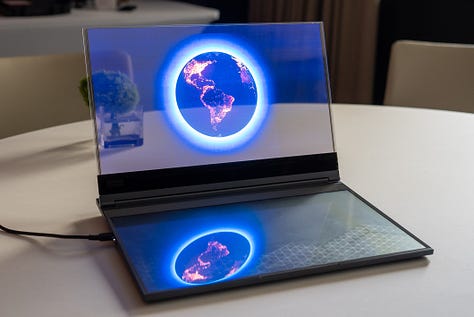
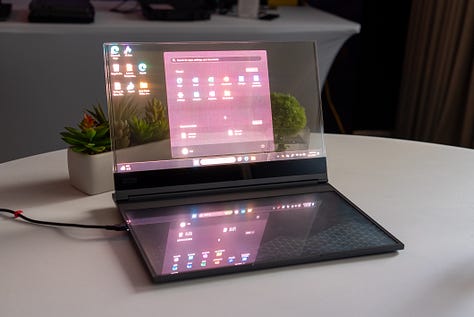
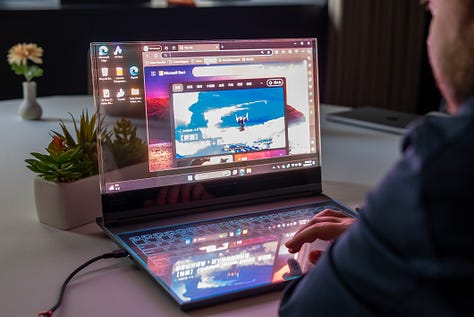
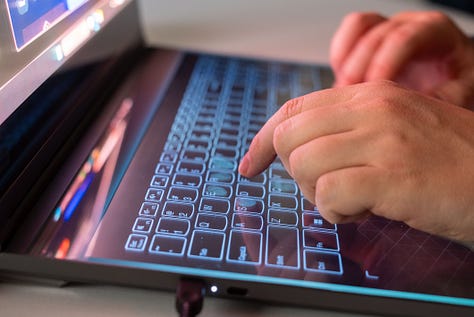
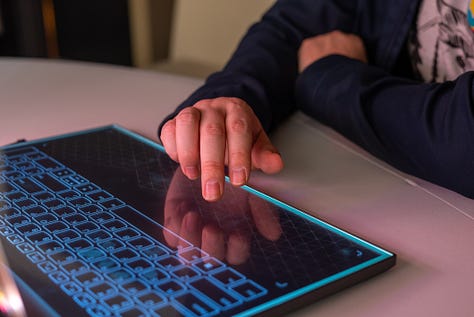
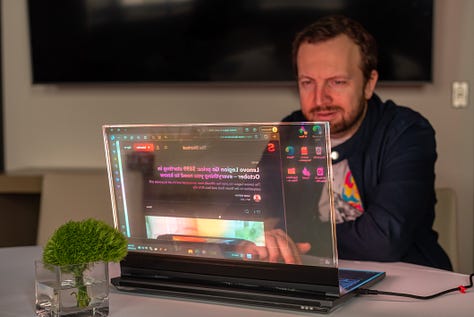
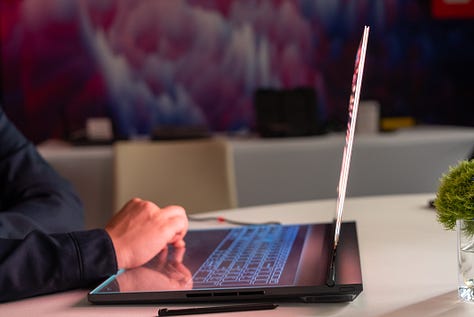
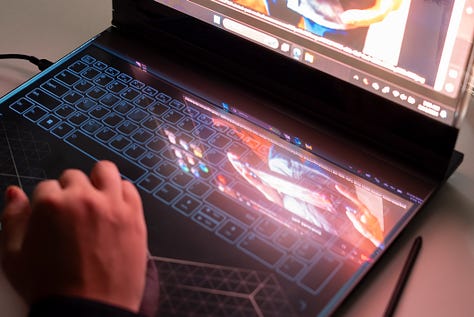
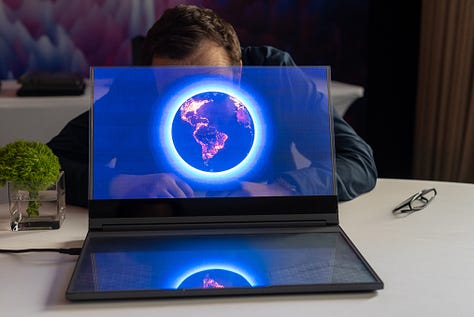
Desktop icons and windows look like they’re simply floating in the air on this 17.3-inch micro-LED transparent display. Now the screen isn’t completely clear, it still looks like you’re looking through a thick sheet of acrylic with a slight tint. There’s also no contrast screen backing – a black sheet that goes over the back of the screen – like the LG Signature OLED T to turn the see-through screen into a regular laptop display.
Overall, it’s very impressive how invisible the screen looks. The most opaque parts of the display are slightly thicker side edges, but I think this helps frame the transparent screen so you can see where it ends. Meanwhile, those thicker sides give this device the illusion that you’re looking at projected holograms instead of having any physical monitor at all.
The experience only gets better when you start opening file browser windows and programs. All the while you can still see the back of your desk or a coworker through the screen. On the flipside, looking at the back of the screen the device looks like a computer terminal from the Mass Effect series.
The see-through screen doesn’t just look futuristic, it looks spectacularly bright with a 1,000-nit peak brightness and highly saturated colors that just pop off the screen.
The ThinkPad Transparent also features a virtual keyboard that springs to life and lights up when you touch it. The whole surface of the keyboard can also be used as a virtual drawing board for a compatible wireless digital pen. I can imagine this device would be perfect for artists, as they could see their inspiration through the screen or even trace it as they’re drawing the image on the transparent display.
The Lenovo’s ThinkPad Transparent also features a stealth touchpad so the lower half of the device looks extremely clean when the keyboard is off. It’s a very slick device but my only problem is it’s actually too hard to know where the touchpad starts and ends. I started my demo thinking it was in the center when it was actually slightly to the left under the spacebar, which led me to just swipe around without actually moving the cursor.
One thing the Lenovo ThinkPad Transparent can’t do now (but I’d love to see added) is a way for the screen to reverse itself and display things outwardly on the back of the laptop lid. This way you could present things to those sitting across from you or even have the display work while the laptop is closed.
While we’re on the pipe-dream bandwagon, this would be the perfect device for a dual-screen setup like the Asus ZenBook Duo. A notebook with a transparent screen projecting images over a regular screen when closed would produce a game-changing augmented reality experience and maybe even a true 3D picture.
The use cases for a transparent laptop like this are infinite. For example, this would be perfect for holding meetings and showing presentations without hiding behind a regular laptop screen. Alternatively, schools could really benefit from this as students can read their lesson plans while still seeing the teacher — vice-versa, teachers could see if you’re keeping up or just goofing off and playing Fortnite.
For now, the Lenovo ThinkPad Transparent is only a proof-of-concept device. There’s still a lot of work to be done with the display to make its colors more accurate and inputs better. We also don’t have details on the processor or the laptop’s other specs, let alone an idea of the price. I’m hoping this moves to a real product soon because more than anything I want this to be the future of laptops.
Kevin Lee is The Shortcut’s Creative Director. Follow him on Twitter @baggingspam.

